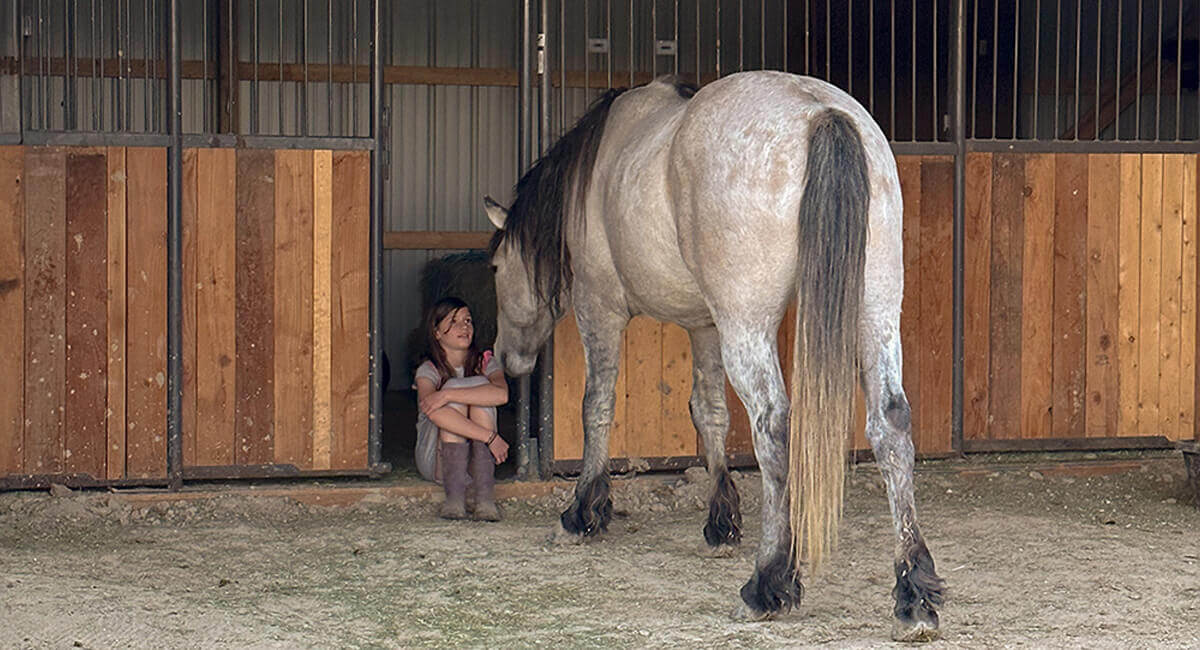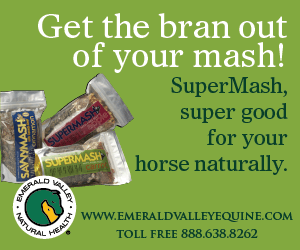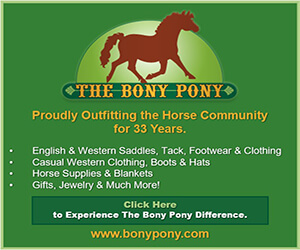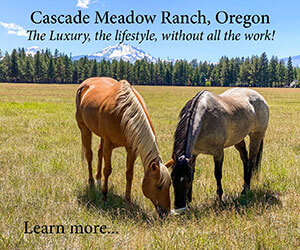Saving Our Mustang Heritage, One Horse at a Time
In a large horse paddock behind a family home on two and-a-half acres in rural Colorado, two formerly wild mustangs can often be found gazing off into the distance. No one can guess exactly what’s going on in their minds, but chances are, they’re remembering their past lives as members of the famed Sand Wash Basin wild horse herd in northwest Colorado. For them, life has begun anew; no longer wild, but safe.
If you’re unfamiliar with the specific histories of the wild horse and its slow demise in the American West, the Sand Wash mustangs were made famous by their striking lead stallion, Picasso, a horse who was tracked and photographed by many people over the years. His coloring and prowess remain nearly unmatched in wild horse annals to this day. Bureau of Land Management roundups are slowly reducing select herds that have thrived for decades, the Sand Wash among them.
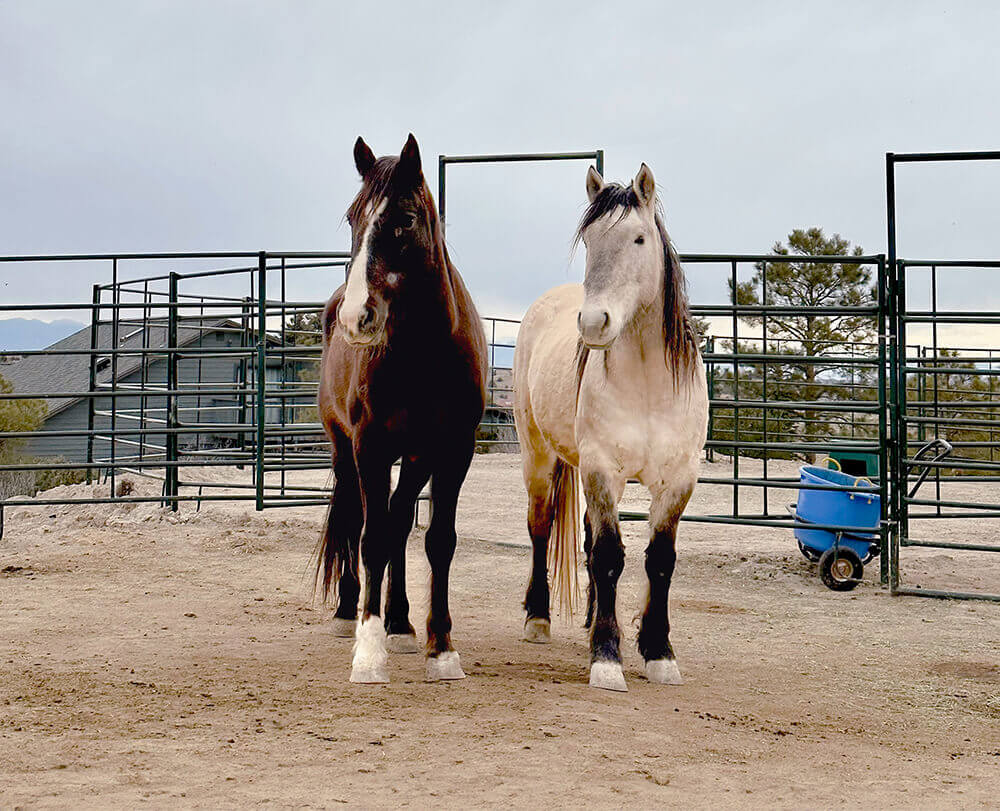
These two geldings—Alfie, a handsome grulla, and Laszlo, a dark bay with a white blaze, are two of the lucky ones, having been adopted from the BLM’s adoption program at the federal prison in Canyon City by the Aschenbrenner family of Aurora, Colorado. Both horses wear bold freeze brands identifying their origins and age, an identification they will wear for life.
Modern technology has made the process of adoption fairly easy. The family was able to view all the eligible horses via photographs and video during an online auction before picking out the exact two they wanted. It was a compassionate move that required courage, patience, and generosity.
When asked why the family adopted two horses, not one, their daughter Savannah, 11 years old and in the fifth grade, answers candidly, “Well, we already had two of every animal: two cats and two dogs, plus 12 chickens and several fish. But more importantly, we knew they would be happier with a friend.”
Savannah’s mother, Molly, adds, “These two were chosen for their age (five years or older) and for their height—our Savannah has long legs. She’ll be riding them before long. As we watched the auction videos, we also looked for the calmest horses.”
Molly also makes it clear that this adoption was a family decision, one agreed upon by her and her husband, Brandon, and their two boys as well, giving their daughter who is already riding and loves horses a project to work on and remember forever. Savannah belongs to a local United States Pony Club and has been taking lessons, and Molly rides both Western and English. For both, this experience is an entirely new challenge.
The transition to domestic life for the mustangs has been slow but steady. Any adopter must have adequate space plus easy access for the horses to fresh water and shelter. Here, the pair have all of that and more including turnout to great pasture when the day comes.
Following their arrival, Savannah explains that at first, Laszlo was very cautions, Alfie more curious. Laszlo took food gently; Alfie grabbed his treats. Laszlo, who is older and once had his own band, seemed to act like a protector while Alfie, when captured, was still with his mother. It’s been easy to see that the horses have distinctly different personalities.
Still at the “getting to know you” stage, the Aschenbrenners spend time with them every day. “We sit and talk to them and hand feed alfalfa cubes,” says Molly. “Once we start training, we want it to be based on trust. We’re basing our approach on several videos that key trainers have produced, emphasizing a combination of ‘light’ natural horsemanship and positive reinforcement (R+). We want the horses to make a conscious decision to work with us.”
The good news is that the slow approach is working. Savannah proudly says, “When we approach them in the morning or evening, they greet us with knickers and neighs. In the beginning they made snorting noises instead. Back then, they were afraid. Once we get to riding them, there’s a horse trail that goes all around our neighborhood. Alfie is going to be my horse. I’m looking forward to that.”
If there’s a simple lesson in any of this, it’s about the obligation the entire horse community must have to save the thousands of wild ones who’ve been rounded up and now wait, languishing in holding pens until their eventual deaths. Once captured and branded, they aren’t supposed to be released into the wild ever again. It’s a sad situation.
For those with extra room and extra time, saving a wild horse might be the most memorable experience in any horse owner’s life. Be inspired. Be willing. Make it a family affair and add a mustang to your world.
See this article in the March 2024 online edition:
March 2024
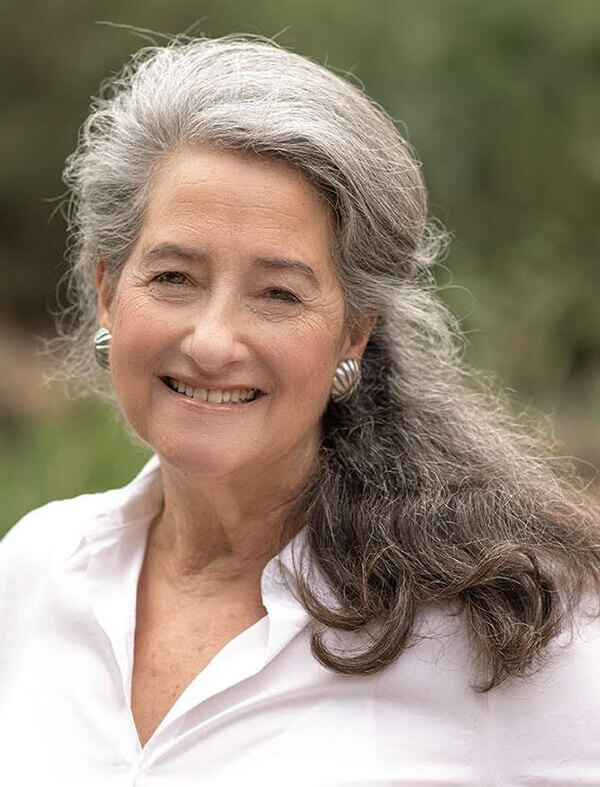
Corinne Joy Brown is an award-winning novelist and freelance writer in Colorado who writes about the West, equines, art and design, pop-culture and more. She loves the cowboy life and follows international equestrian events as well—anything to do with horses. www.corinnejoybrown.com; Email: [email protected]; Facebook: corinnejoybrown

